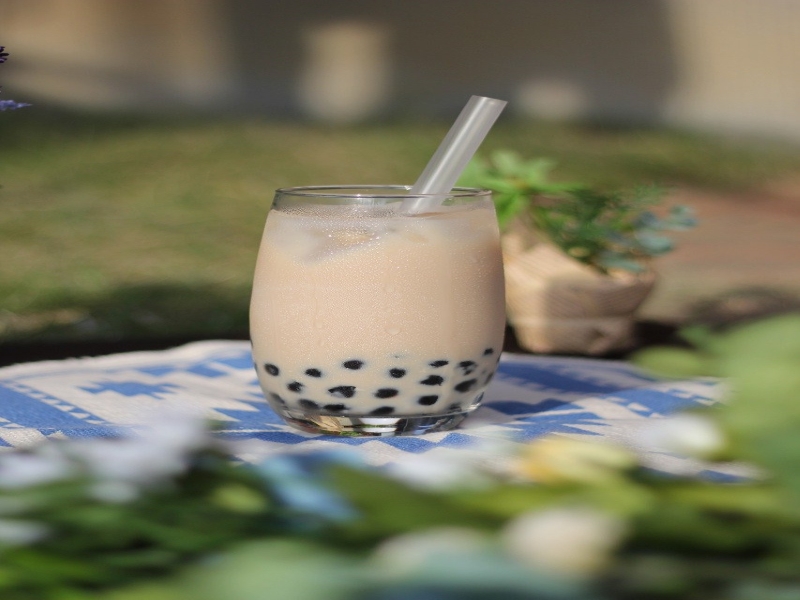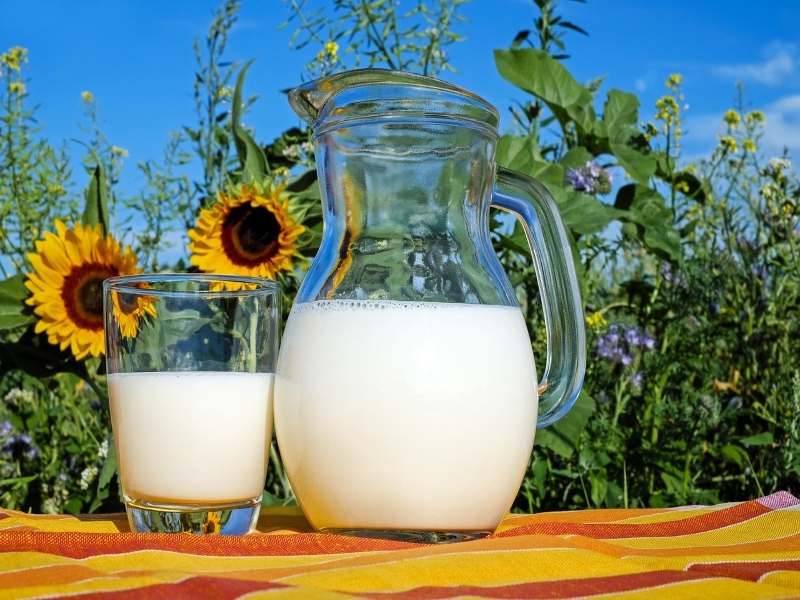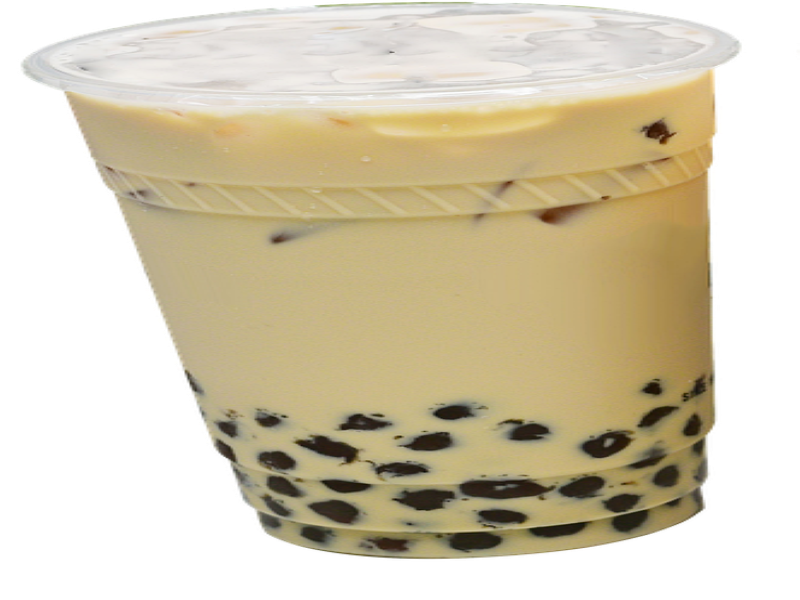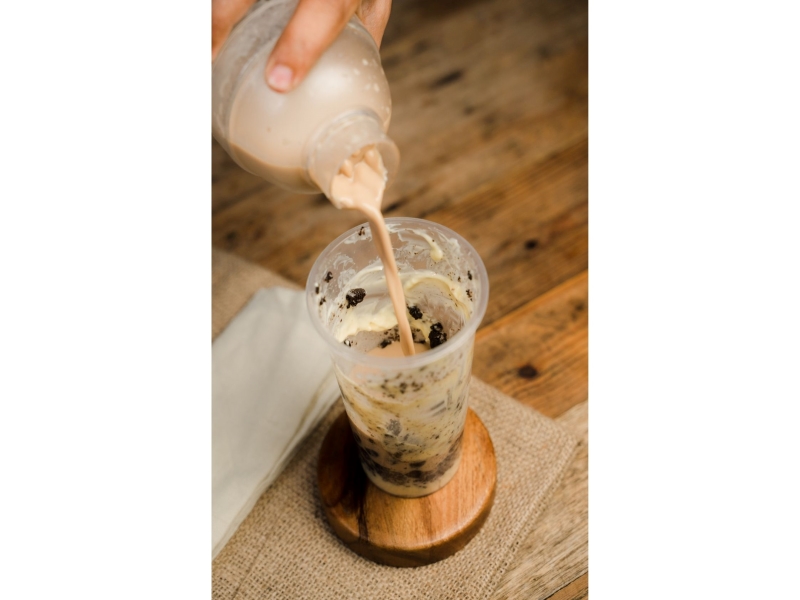Who doesn’t enjoy a cup of milk tea? Milk tea refers to a variety of beverages made with a combination of tea and creamy milk that are popular in many cultures. It is a refreshing drink that is perfect for summer. Milk tea is also known as bubble tea, boba tea or simply boba. It is usually served with tea and chewy tapioca pearls, although it can also be made with different toppings.
There are several types of milk tea, and they come in a variety of flavors, but we’ll concentrate on Okinawa milk tea.
Okinawa Milk Tea

What Is Okinawa Milk Tea?
Okinawa milk tea is a popular traditional drink that originated in Okinawa region of Japan. This type of milk tea is named after the Okinawa Prefecture in Japan. The milk tea is brewed using loose-leaf black tea leaves, typically Assam leaf, whole milk from native cows, and Kokuto sugar or Okinawa brown sugar, a special component that provides the milk its distinctive flavor and authentic taste. Okinawa milk tea and Hokkaido milk tea are sometimes confused, however they are not the same.
What Is Okinawa Brown Sugar?
Okinawa brown sugar is also known as Kokuto sugar. This is an Okinawa regional specialty that is frequently offered in huge lumps. It’s occasionally used to produce shochu. Okinawa brown sugar is frequently referred to as “black sugar” because of its darker color when compared to other types of unprocessed sugar, yet the color lightens when broken up into smaller pieces.
Kokuto sugar is widely used to flavor drinks and pastries, but it can also be eaten raw because it has a caramel-like flavor. The sugar is also thought to be high in minerals like potassium and iron, which are lost during the refinement of other sugars. Because of how it is made, Kokuto is thought to be healthier than regular brown sugar. Okinawa Brown sugar is manufactured on Okinawa by squeezing sugar cane juice and boiling it. This method brings sugar closer to the natural sugar cane plant, making it nourishing.
Because of its particular deep and rich flavor, as well as its health benefits, Japanese people use this particular sugar in making Okinawa milk tea, pastries, mochi, and sweet soups.
Okinawa Milk Tea Taste
The Kokuto sugar gives the Okinawa milk tea its distinct taste. This is different from the usual brown sugar that we commonly used. The brown sugar that we typically used is produced by adding molasses back into the refined white sugar. Okinawa brown sugar is produced by cooking the juice of sugarcane to a delicious and toasted sugar. The roasted brown sugar is packed with vitamins and minerals.
The premium quality ingredients used, particularly the Okinawa brown sugar, give Okinawa milk tea its distinct rich, toasted, and tangy flavor. The sweetness of the natural Japanese Kokuto sweetener nicely balances its robust tang. Moreover, the taste of this refreshing drink is enhanced by the creamy texture of fresh dairy.
When you blend the depth and richness of Assam black tea with the roasted smoothness of Okinawa brown sugar, you get a wonderful, robust drink that is moderated by the subtle creaminess of whole milk infused to the drink.
Okinawa Milk Tea Nutritional Value
The Okinawa milk tea has 185 calorie content per 500 ml drink. Compared to fruit based milk tea, this refreshing drink is the ideal boba tea substitute since fruit based bubble tea can have 350 calories.
What Are The Common Ingredients Of Okinawa Milk Tea?

Kokuto
It is also known as Okinawa brown sugar. It is the most crucial ingredient in this recipe, as it imparts a malty, deep caramelized flavor to the milk tea. If you don’t have Kokuto, a good substitute would be muscovado sugar or gula melaka, which is a Thai coconut palm sugar.

Black Tea
If you want to make an Okinawa milk tea, it is best to use loose leaf black tea. Assam tea is best recommended however, you also have the option to use English Breakfast, Ceylon, Darjeeling, or Earl Grey tea.

Milk
The best milk to use in making Okinawa milk tea is whole milk. However, you can use other types of milk.

Tapioca Pearls
Boba is another name for tapioca pearls. For millions of people in tropical regions, it is a staple food. It is low in protein, vitamins, and minerals, and provides solely carbohydrate food value. It’s utilized as a thickening agent in a variety of processed foods.

Making Milk Tea Using Milk Tea Powder
Ingredients
- Tapioca Pearls
- 6 g black tea assam tea
- 50 g milk powder
- 30 g non-dairy creamer
- Ice
- brown sugar syrup (optional)
Instructions
- Cook tapioca pearls. It will take about an hour and 15 minutes to prepare.
- Put 6g black tea in 220 ml boiling water, steeped for 12 minutes.
- Then add 50g of milk tea powder to the mix. After that, add 30g of non-dairy creamer.
- Next, put 2 tablespoons of tapioca pearls at the bottom of a glass cup.
- Lastly, add ice into the cup, and pour the drink into the iced cup. You may add your brown sugar syrup.

How To Prepare Okinawa Milk Tea From The Scratch
Ingredients
2 teaspoon loose leaf black tea or Assam tea leaves
high-quality whole milk
Okinawa brown sugar/ Kokuto sugar
Tapioca pearls
Instructions
- First, prepare the Okinawa milk tea ingredients. In a saucepan, mix kokuto and water to make the sugar syrup.
- Over medium-high heat, cover and simmer until it boils. Then lower to medium and continue to cook until the mixture is thick and sticky.
- Next, cook the tapioca pearls separately according to the package directions. After they’ve been cooked, drain them and immediately place them in the sugar syrup. To help them absorb the syrup, cook for a few minutes over low heat. Once everything is ready, set aside.
- Then, infuse loose leaf black tea with hot water to make the tea. Add extra black tea leaves if your personal preference is a stronger tea. If you steep the black tea for longer, it will taste bitter rather than stronger.
- Since all the ingredients are ready, we can now prepare Okinawa milk tea. Place the black tea into a glass and fill it about a third of the way.
- Then, pour a little amount of milk, and stir quickly. Do not overfill the container.
- Place the tapioca pearls along with a few teaspoons of sugar syrup in a cup. You can use as little or as much syrup as you want. Then, add ice cubes.
- To serve, mix some milk, and pour it over the tea. You can add more milk if you want a more creamier texture. Your Okinawa milk tea is now ready to serve.
Practical Tips In Making A Delicious Okinawa Milk Tea
- If you want a pure authentic taste, you should use Kokuto or Okinawa brown sugar. However, Kokuto sugar can be substituted with muscovado or palm sugar, the milk tea will lack the richness of the original.
- The second most important ingredient in making an Okinawa tea is the type of tea to use. The best type of tea to use for Okinawa milk tea is a premium quality loose leaf tea. As much as possible, use Assam tea.
- Do not steep the black tea for more than 5 minutes. Brewing the tea more than 5 minutes can result to a bitter taste. If you prefer a stronger tea taste, just simply add extra black tea leaves.
- For your Okinawa milk tea, it is best to use full fat milk. It will make your milk tea creamier and richer in flavor and texture.
- Use milk tea straws to get the full milk tea experience. Milk tea straws or bubble tea straws are wider than the usual straws, allowing for the tapioca pearls to pass through.
- It is important to serve the milk tea right away after you’ve added the tapioca pearls. If boba pearls or tapioca pearls are left too long in the milk tea, it can become soggy and lose their chewy texture.
Storing Okinawa Milk Tea
It is best to consume Okinawa milk tea within 1-2 hours of preparation. The tapioca pearls will become too soggy and unpleasant to eat if kept for too long.
If you want to save time in preparing the milk tea, you can make the sugar syrup ahead of time. You can refrigerate the sugar syrup in an airtight jar for up to two to three weeks.
Frequently Asked Questions
Because of the main ingredient, Kokuto sugar, the milk tea is thought to be healthier than other types of milk teas.
Since Okinawa milk tea is made with black tea, it does contain caffeine. Although, there are other types of black tea that doesn’t contain caffeine. Check the type of black tea being used in the milk tea to know if it is decaffeinated or not.
Milk tea first originated in Taiwan. Since the Dutch invasion of Taiwan in 1624–1662, milk and sugar have been added to tea in Taiwan. Milk tea made its debut in Japan in the late 1990s, but it failed to make an impact on the general markets. The bubble tea trend didn’t really take off in Japan until the 2010s.
Milk tea is generally packed in a plastic takeaway cup with a rounded cap or a plastic seal in Southeast Asia. Some marketers tried to be unique by packaging their products in bottles and other unusual designs. Still, the most common and popular packaging option is the typical plastic takeaway cup with a tight cover.

